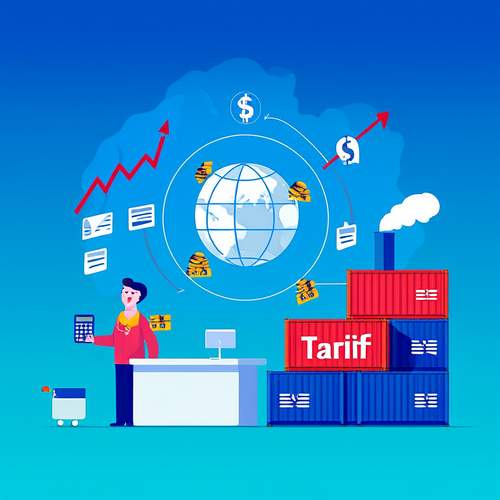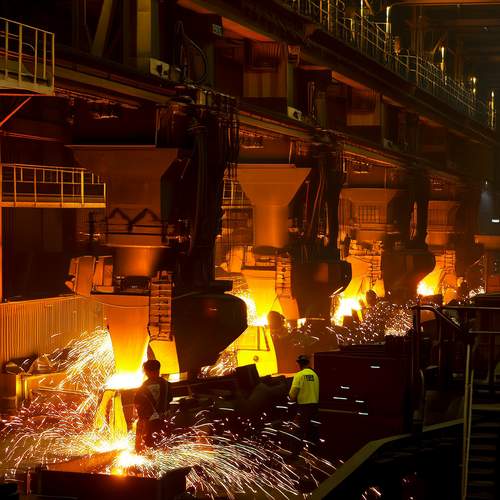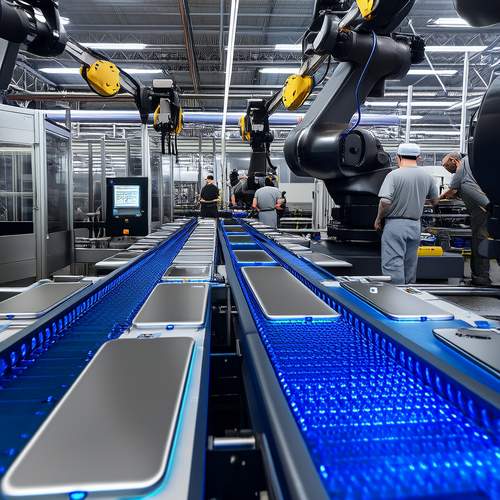In a bold move, President Donald Trump has demanded that Apple and other smartphone manufacturers like Samsung produce their phones in the United States or face a 25% tariff. This demand comes after Trump expressed his dissatisfaction with Apple CEO Tim Cook over the company’s plan to manufacture iPhones in India. Trump’s stance is part of a broader strategy to bring manufacturing jobs back to the US and reduce dependence on foreign production. However, the feasibility of this demand is highly questionable, given the complex and deeply entrenched global supply chains that currently support smartphone production.
The President’s Demand and the Tariff Threat
On Friday, Trump posted on Truth Social that he had long informed Tim Cook that iPhones sold in the US should be manufactured in the US, not India or elsewhere. He stated that if Apple did not comply, it would have to pay a 25% tariff. This tariff threat extends to other smartphone manufacturers as well, with Trump emphasizing that the measure would apply to any company selling devices in the US. According to Trump, this move is necessary to ensure fairness and to bring back precision manufacturing to the US.
The Reality of Apple’s Global Supply Chain
Apple has been working to diversify its production capabilities over the past few years, with some iPhone production already moving to India. During Apple’s recent earnings call, Cook revealed that the majority of iPhones sold in the US would likely be manufactured in India. This shift is part of Apple’s strategy to mitigate risks associated with tariffs and geopolitical tensions. However, Cook also acknowledged that tariffs could add up to $900 million to Apple’s costs this quarter.
Despite these efforts, Apple still relies heavily on China for its manufacturing needs. According to estimates from Wedbush Securities, approximately 90% of iPhone production and assembly is based in China. This reliance on China is due to several factors, including the availability of skilled labor, established supply chains, and lower production costs.
The Challenges of Reshoring Production
The idea of reshoring iPhone production to the US is fraught with significant challenges. Dan Ives, the global head of technology research at Wedbush Securities, has described the notion of US-based iPhone production as a “fictional tale.” He argues that replicating the highly complex production ecosystem currently in place in Asia would be prohibitively expensive and time-consuming.
Ives estimates that US-made iPhones could cost more than three times their current price of around $1,000. This price increase is due to the higher costs associated with establishing high-tech manufacturing facilities, known as fabs, in the US. For instance, building such facilities in states like West Virginia and New Jersey would result in iPhones priced at around $3,500. Moreover, it would cost Apple approximately $30 billion and take three years to move just 10% of its supply chain to the US.
The Broader Economic Implications
The potential shift in iPhone production to the US has broader economic implications beyond Apple’s financial performance. The US manufacturing sector has been in decline for decades, and the establishment of high-tech manufacturing facilities would require significant investment in infrastructure, workforce training, and technology. While this could create jobs in the short term, the long-term sustainability of such an endeavor is uncertain, given the global competitive landscape.
Moreover, the imposition of tariffs and the push for domestic production could lead to retaliatory measures from other countries, further disrupting global trade and supply chains. This could have a cascading effect on other industries and the broader economy, potentially leading to higher inflation and reduced consumer spending.
The Role of Global Supply Chains
The shift of smartphone manufacturing to Asia over the past few decades has been a strategic move for American companies like Apple. By focusing on software development and product design, which offer higher profit margins, Apple has become one of the world’s most valuable companies. This strategy has allowed Apple to dominate the smartphone market while leveraging the cost-effective manufacturing capabilities of Asia.
The current global supply chain is highly optimized for efficiency and cost-effectiveness. China, in particular, has developed a robust ecosystem for manufacturing electronics, with a large pool of skilled labor and advanced infrastructure. Replicating this ecosystem in the US would require significant investment and time, making it an unattractive proposition for companies like Apple.
The Potential for Price Increases
Gene Munster, managing partner at Deepwater Asset Management, estimates that it would be difficult for Apple to avoid raising iPhone prices if faced with tariffs of 30% or higher. While Apple might absorb some of the cost increases initially, Munster believes that at some point, these costs would have to be passed on to consumers. This would result in higher prices for iPhones, potentially affecting consumer demand and Apple’s market share.
Apple’s Efforts to Expand US Production
Despite the challenges, Apple has made efforts to expand its US production capabilities. Earlier this year, the company announced a $500 billion investment to expand its US facilities. This investment aims to create a new facility to produce servers in Houston, expand data center capacity in several states, and invest in corporate facilities and Apple TV+ production across 20 states.
While these efforts are significant, they do not address the core issue of iPhone production. The majority of Apple’s manufacturing will likely remain in Asia, given the current supply chain dynamics and the costs associated with reshoring.
A Complex and Uncertain Future
President Trump’s demand for US-based iPhone production is a bold but highly complex proposition. The significant challenges associated with reshoring production, including high costs, long timelines, and the need to replicate a highly optimized supply chain, make it an unfeasible option for Apple. While the push for domestic manufacturing aligns with broader economic goals of job creation and reducing reliance on foreign production, the practical implementation of such a plan requires careful consideration of the economic and logistical hurdles involved.
As Apple navigates these challenges, the future of iPhone production remains uncertain. The company’s efforts to expand its US facilities are commendable but do not address the core issue of manufacturing iPhones in the US. The feasibility of reshoring production remains a distant dream, highlighting the complexities of global trade and the limitations of protectionist policies in a highly interconnected world.

By Grace Cox/May 26, 2025

By Emma Thompson/May 26, 2025

By Christopher Harris/May 26, 2025

By Laura Wilson/May 26, 2025

By Thomas Roberts/May 26, 2025

By Laura Wilson/May 26, 2025

By Amanda Phillips/May 26, 2025

By Noah Bell/May 26, 2025

By Laura Wilson/May 26, 2025

By John Smith/May 26, 2025

By Sarah Davis/May 26, 2025

By James Moore/May 26, 2025

By Amanda Phillips/May 26, 2025

By Michael Brown/May 26, 2025

By Daniel Scott/May 26, 2025

By Thomas Roberts/May 26, 2025

By Victoria Gonzalez/May 26, 2025

By Grace Cox/May 26, 2025

By Rebecca Stewart/May 26, 2025

By Laura Wilson/May 26, 2025